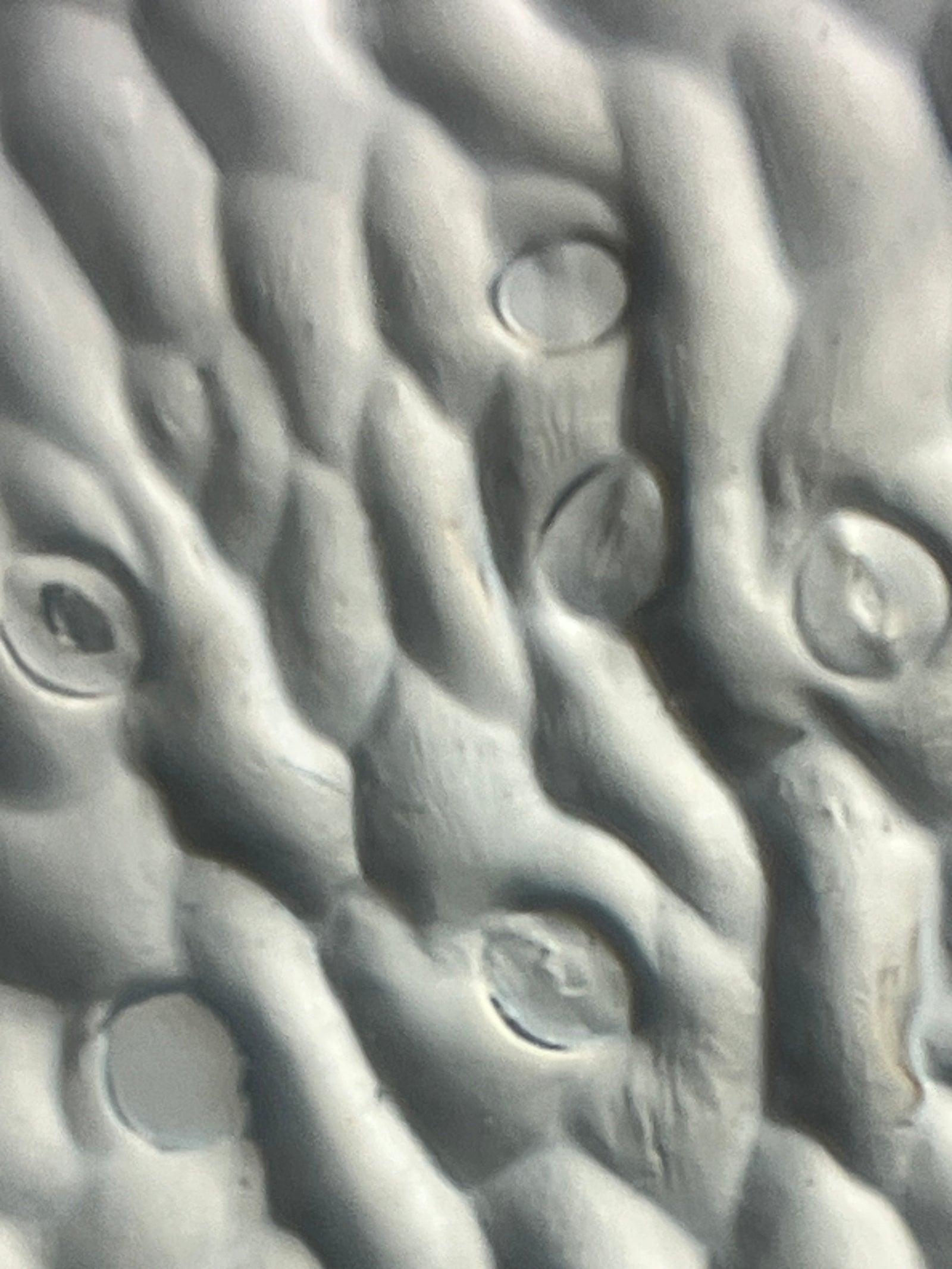This week marks the average frost free date for my plant hardiness zone, which means that I am up to my eyeballs in seeds! Before planting them in my garden, I put some of these seeds under my Foldscope 2.0! Read on to find out what I saw!

Figure 1. Picture of arugula and beet seeds
(Photo Credit: Holly A. Stuart)
What is the Seed Coat?
The seed coat is the protective outer layer of the seed. It stops infectious microbes from harming the embryo. If an animal eats the seed, the coat is what prevents digestion of the seed. The seed coat also responds to environmental conditions (temperature, humidity, and light exposure) by opening only when it is the right time for the embryo to begin growing. Seed coats come in a variety of thicknesses, textures, and colors. This Surface Feature Comparison Chart can help you identify the type of seed coat your seeds have.

Figure 2. Picture of a bunching onion seed viewed under a Foldscope 2.0 at 50X magnification plus 5X zoom on phone using reflective lighting
(Photo Credit: Holly A. Stuart)
Hairy Seed Coats
Tomato seeds are oblong, thin, flat, and covered with hair. The hair is actually made of tiny trichomes which are structures that help to protect the seed. Trichome hairs can be found on mature tomato plants too.

Figure 3. Picture of tomato seeds (left) viewed under a Foldscope 2.0 at 50X magnification plus 5X zoom on phone with dark field lighting (right top) and 50X magnification plus 5X zoom on phone with reflective lighting (right bottom)
(Photo Credit: Holly A. Stuart)
Stellate Grooved Seed Coats
Tomatillo seeds are round and thin with a smooth looking surface. But the Foldscope reveals that the seed coat is actually covered with small grooves that are shaped like puzzle pieces.

Figure 4. Picture of tomatillo seeds (left) viewed under a Foldscope 2.0 at 50X magnification with brightfield lighting (right top), 50X magnification with dark field lighting (right middle) and 50X magnification with reflective lighting (right bottom)
(Photo Credit: Holly A. Stuart)
Ridged Seed Coats
Radish seeds were the trickiest ones to view under my Foldscope. The seeds are spherical making focusing a challenge. The lack of a flat surface means you are only able to focus on one small area at a time. But, even with this limitation, I was able to see that the surface of the radish seed is not smooth like it appears on the macroscopic scale. It actually has a series of ridges that form microscopic pockets all around the seed.

Figure 5. Picture of radish seeds (left) viewed under a Foldscope 2.0 at 50X magnification with reflective lighting (right top), 140X magnification with reflective lighting (right middle) and 140X magnification plus 5X zoom on phone with reflective lighting (right bottom)
(Photo Credit: Holly A. Stuart)
With so many varieties of seeds out there, documenting the microscopic features of seed coats could be its own research project! How many have you looked at under your Foldscope 2.0? Share your seed discoveries on the Microcosmos and tag us on social media when you post the results of your explorations! We love to see how Foldscopers around the world are using their Foldscopes in new and innovative ways!

Figure 6. Picture of pepper seeds (far left) viewed under a Foldscope 2.0 at 50X magnification with dark field lighting (center left) and bunching onion seeds (center right) viewed under a Foldscope 2.0 at 140X magnification with reflective lighting (far right)
(Photo Credit: Holly A. Stuart)
Facebook: @Foldscope
Instagram: @teamfoldscope
Blue Sky: @teamfoldscope.bsky.social
TikTok: @foldscope
Threads: @teamfoldscope
Twitter: @TeamFoldscope
Sources:
https://www.seedparade.co.uk/news/guides/anatomy-seeds/
https://www.idseed.org/authors/details/seed_surface_feature.html
https://www.housedigest.com/1423914/what-fuzzy-hair-tomato-plant-tiktok-root/



